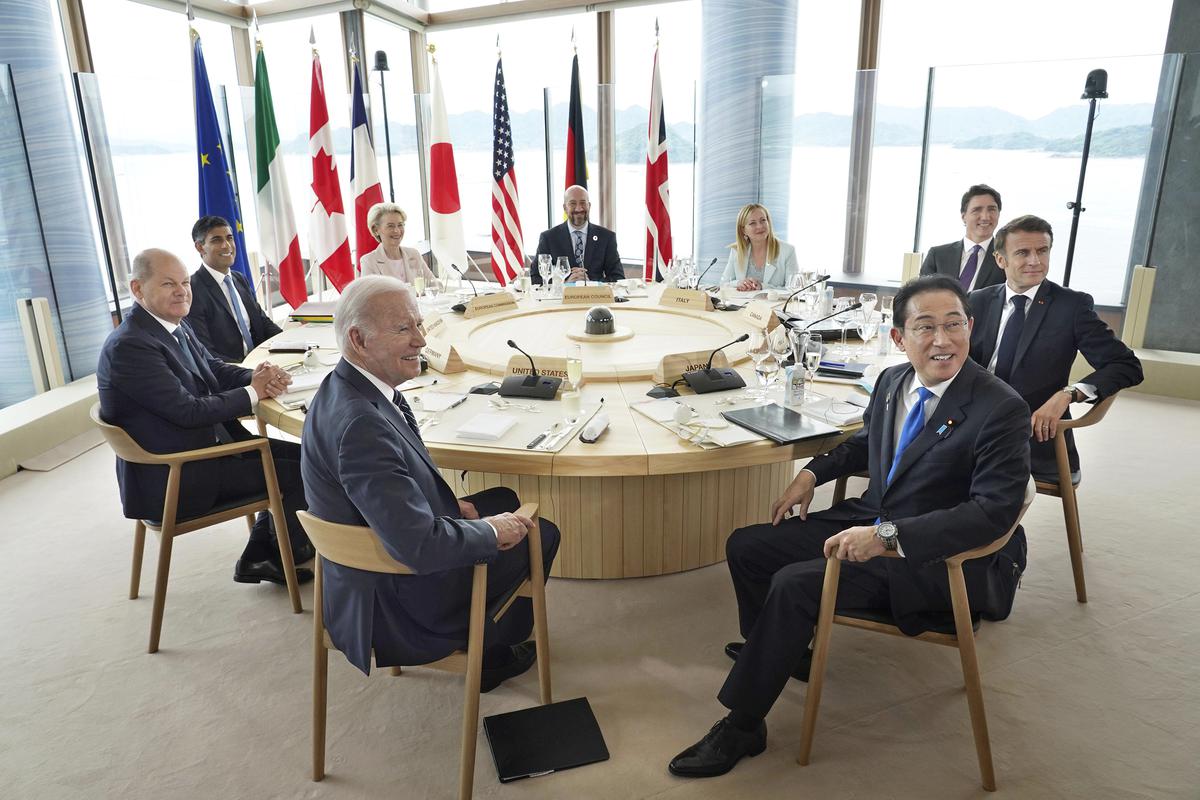- Hiroshima, Japan, hosts the G7 Summit. In May 2023, the Group of Seven (G7) countries convened their annual conference in Hiroshima, Japan.
- Hiroshima AI Process (HAP) was begun by a communique: The G7 leaders issued an official statement establishing the Hiroshima AI Process (HAP) to oversee artificial intelligence (AI).

What what is the Hiroshima AI Process (HAP)?
- Inclusive AI governance: The HAP’s goal is to foster inclusive artificial intelligence governance.
- Maintaining democratic principles: The HAP aims to create and implement AI systems that correspond with democratic values and are regarded trustworthy.
- The HAP prioritises talks and initiatives concerning generative AI, governance frameworks, intellectual property rights, transparency measures, and responsible usage of AI technologies.
- The HAP is expected to complete its efforts and produce results by December 2023. The process formally began on May 30 with the first meeting.
Significant Process Aspects
- The Liberal Process in AI Development: The HAP places a high priority on ensuring that AI development adheres to the principles of freedom, democracy, and human rights.
- The HAP recognises the significance of fairness, accountability, transparency, and safety as core values that should guide the responsible development and use of AI technologies.
- Ambiguity with keywords: The HAP does not precisely specify the exact interpretation and use of terminology such as “openness” and “fair processes” in the context of AI development.
Including the Procedure
- For the time being, the HAP can play out in three ways: it allows the G7 countries to move towards divergent regulation based on shared norms, principles, and guiding values; it becomes overwhelmed by divergent views among the G7 countries and fails to deliver any meaningful solution; or it delivers a mixed outcome with some convergence on finding solutions to some issues but fails to find common ground on many others.
Potential Intellectual Property Rights (IPR) as an Example of the Process’s Impact
- The HAP can be used to define guidelines and principles addressing the link between AI and intellectual property rights in order to reduce conflicts and give clarity.
- Concerns the usage of copyrighted materials: The HAP can help shape global discourse and practises about the fair use of copyrighted works in datasets used for machine learning (ML) and artificial intelligence (AI).
Creating the Scene
- Diverse perspectives on trustworthy AI: The G7 recognises that different member countries’ opinions and aspirations on what constitutes trustworthy AI may differ.
- Working with others is emphasised: The HAP emphasises the significance of collaborating with other entities, notably OECD countries, to develop interoperable frameworks for AI governance.
@the end
The formation of the HAP demonstrates that AI governance is a global problem involving numerous stakeholders who may hold opposing views and disputes
Source: Vhttps://www.thehindu.com/sci-tech/technology/hiroshima-ai-process-g7-explained/article66959829.ece#:~:text=The%20annual%20Group%20of%20Seven,regulate%20artificial%20intelligence%20(AI).
